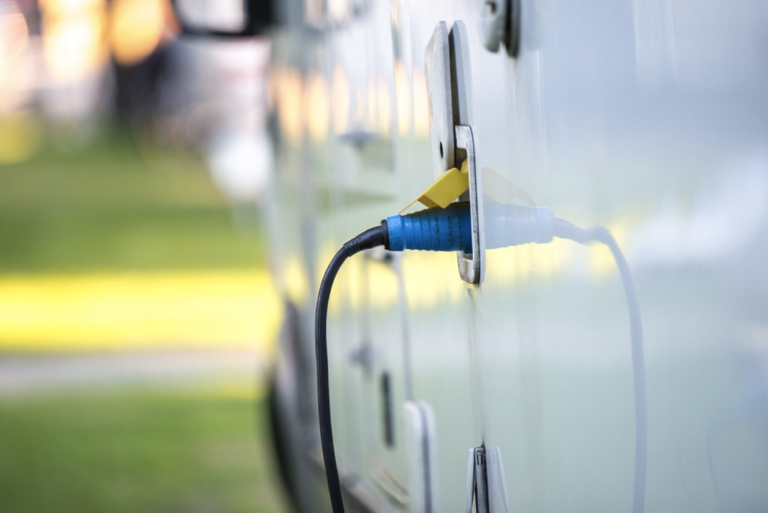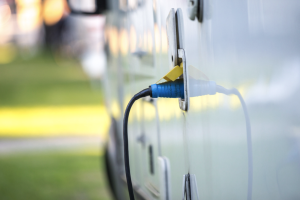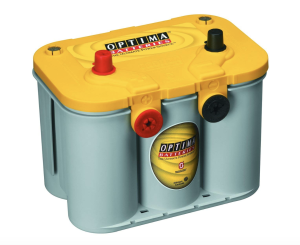
 Your RV uses several different types of batteries for several different functions. For starters, there’s your RV battery that actually helps you to drive your vehicle – like a car battery only for your RV. Then you have your “house batteries.” Also knowns as deep cycle RV batteries, these are the batteries that run everything in your RV – like the lights and appliances – once you’ve set up camp. It’s helpful to know a little about your RV deep cycle batteries so you know how to pick a good one!
Your RV uses several different types of batteries for several different functions. For starters, there’s your RV battery that actually helps you to drive your vehicle – like a car battery only for your RV. Then you have your “house batteries.” Also knowns as deep cycle RV batteries, these are the batteries that run everything in your RV – like the lights and appliances – once you’ve set up camp. It’s helpful to know a little about your RV deep cycle batteries so you know how to pick a good one!
How deep cycle batteries for RV work
RV house batteries go through “deep-cycling,” which means they are usually fully discharged before they’re recharged again. They’re designed to provide a long-lasting, steady charge, rather than short bursts of power like engine batteries. A deep cell RV battery will also last up to four times longer than normal starting batteries.
How to get the most out of your deep cell battery for RV
There are a few things you can do to maximize the lifespan of your deep cycle battery for RV. Cycle the battery down to 50% discharge before recharging it every time instead of recharging the battery when it’s down to 20% of its charge. The sooner you can recharge your deep cycle rv battery, the better.
On the flip side, you don’t want to undercharge your battery. Make sure it gets recharged to 100% before unplugging and using it again. Undercharging can also age your RV deep cycle battery and causes sulfation, when the sulfate material crystalizes on the discharged portions of the battery plates and render them useless. There are a few ways to check the charge of your battery, though none of them are ideal. You can shell out a few hundred bucks for a meter to measure the charge. You can also go by battery voltage and use a digital display.
Buying a deep cycle battery RV
The goal, of course, is to get the most power for the least cost when buying your deep cycle RV battery. Power for these batteries is measured in either amp-hours (AH) or reserve capacity (RC). AH refers to how many amps the battery will put out over a 20-hour period, and RC refers to how many minutes the battery can support a 20 amp output. A battery with a larger AH or RC rating has more capacity than a smaller one.
Deep cycle RV batteries are configured one of two ways – flooded lead acid and valve regulated lead acid batteries. Flooded lead acid is more common, where the lead is bathed in a solution of water and acid. The batteries lose some of this acid with each use, so be sure to refill them with water every now and then. Some come with removable caps so you can look inside the battery and maintain it, while others don’t let you do that.
Valve regulated lead acid batteries will almost never require maintenance – the electrolyte is suspended in a gel or fiberglass mat. Gel cell batteries use battery acid in the form of a gel. They are leak-proof, and while they’re excellent for boats and water vehicles, they are less so for RVs as they don’t recharge as well.
Generally speaking, the larger the size of a deep cell RV battery, the greater the AH and RV…and the more power they have. Keep in mind, you can also join batteries together and wire them in parallel to get more amp hours but keep the voltage the same.

Best RV deep cycle batteries
If you’re looking for the best deep cycle battery for RV, here are a few options:
As you can see, batteries come at a variety of price points and power. Knowing what you want to use yours for is the first step to picking a great one!
This post may contain affiliate links.
